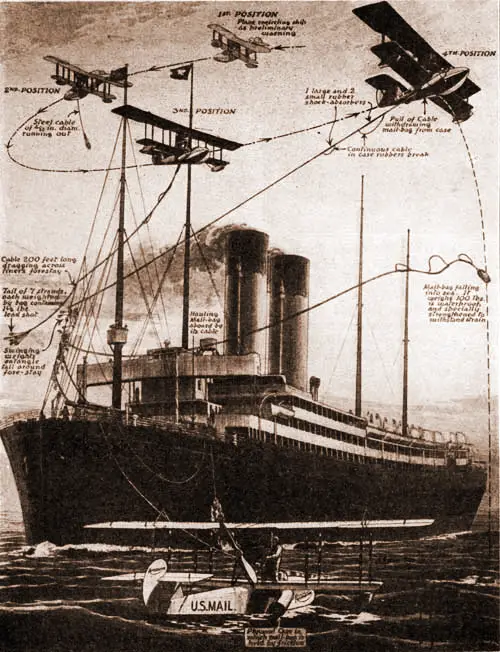Aerial Mail at Sea - 1920 - How Mail is Dropped on Liners by Airplanes

The above illustration graphically portrays and describes the remarkable feat of an airplane dropping a mail sack on an ocean liner at sea, while both craft are in motion, as performed by Pilot C. J. Zimmerman and a mechanic in a U. S. mail aeromarine boat, when a pouch was delivered to the White Star liner Adriatic. The flying boat left New York an hour and a half after the liner had departed, and, in spite of bad weather, overtook the speeding leviathan in an hour and forty-five minutes. The mail pouches used for this purpose are watertight and unsinkable
- 1st Position: Plane encircling ship as preliminary warning.
- 2nd Position: Steel Cable is running out (Let out from the plane)
- 3rd Position:
- Cable 200 feet long dragging across liners Forestay
- Tail of 7 strands each weighted by bag containing 16 lbs lead shot
- Swinging weights entangle rail around fore-stay
- 4th Position:
- Pull of Cable withdrawing mailbag from case
- Cable contains 1 large and 2 small rubber shock absorbers.
- Continuous cable in case rubbers break
- Mailbag falling into sea. It weighs 100 pounds, is waterproof and specially strengthened to withstand the strain
- Pull of Cable withdrawing mailbag from case
- Mailbag is hauled on board by the cable.
Source: Illustrated World, Vol. XXXIII, No. 2, April 1920, Page 294. Published in Chicago, IL
